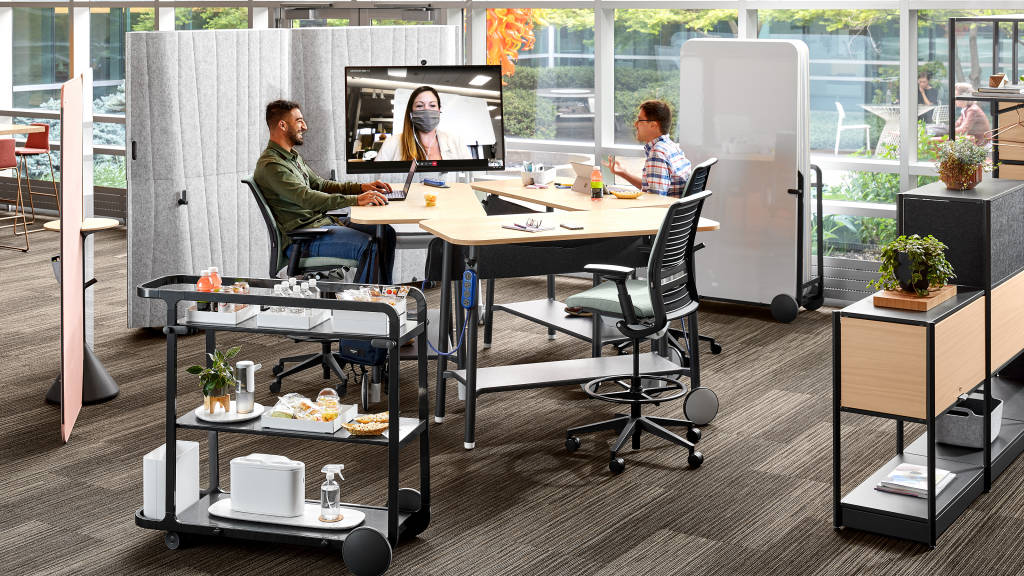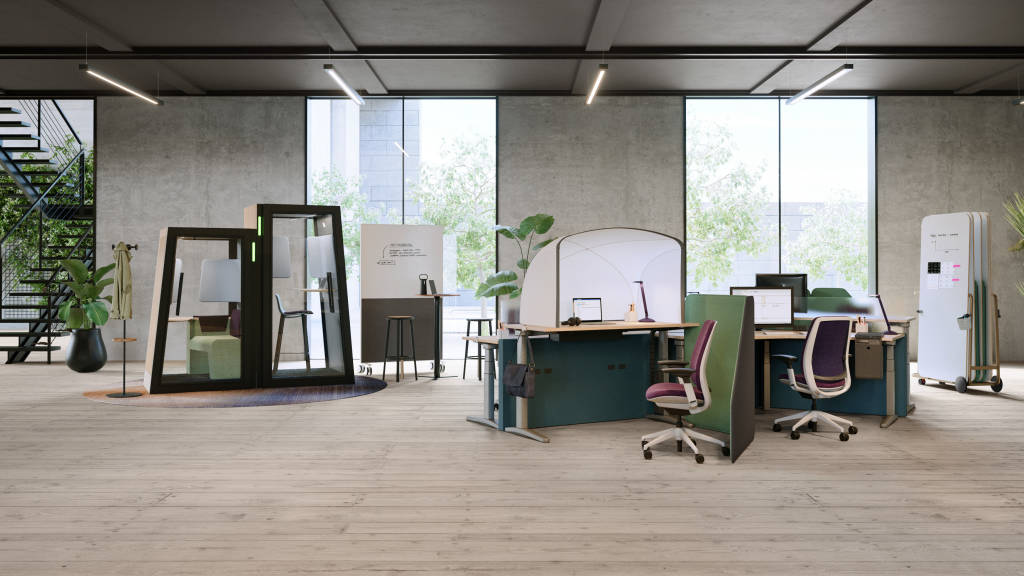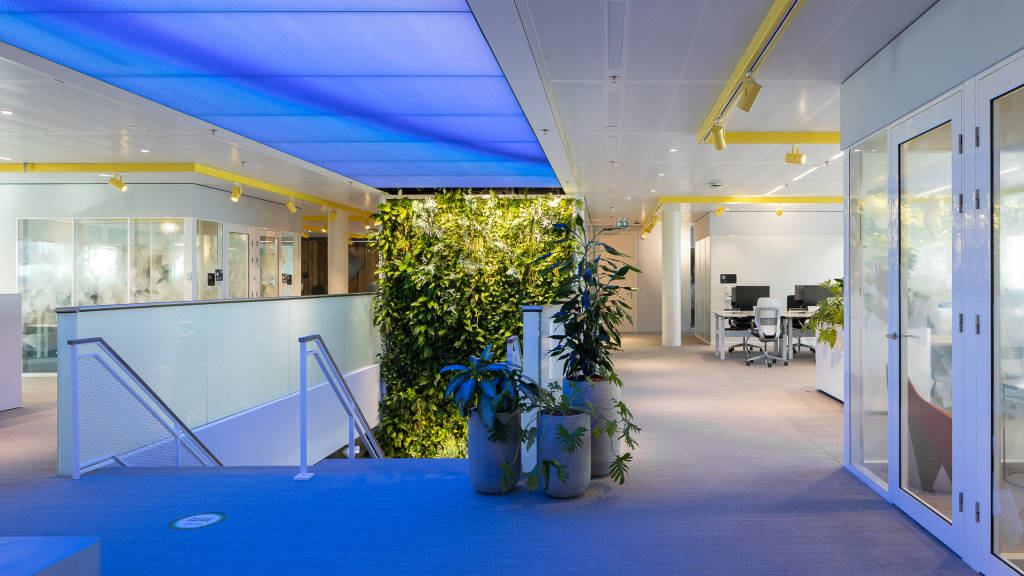Making Hybrid Work
Microsoft and Steelcase leaders share how they are successfully bringing people back to a hybrid workplace.
There is no one-size-fits-all hybrid approach. Leading organizations are trying to define the right hybrid model for their organization and it helps to hear how others are making it work.
Leaders from Microsoft and Steelcase in the U.S. and Europe joined 360 host Katie Pace for a webinar where they shared their stories about bringing people back to a hybrid workplace. This article is an excerpt from that lively conversation (which you can watch in full on demand).
Our panel:
- Joris Haverkort, Microsoft Netherlands Experience Center Director
- Donna Flynn, Steelcase Vice President, Global Talent
- Steelcase: Dr. Tracy Brower, Author of The Secrets to Happiness at Work, Contributor to Forbes.com, Principal, Applied Research + Consulting, Steelcase
Katie Pace: Give us a snapshot of what the state of return to office is where you are.
Donna Flynn: We’ve been bringing people back over the last six weeks in Michigan. In May, we had a phase where we encouraged people to come back and reconnect. In the last few weeks, we’ve been seeing 85% attendance compared to pre-pandemic and are moving toward a full return to office.
Joris Haverkort: The Netherlands is still officially closed. We are looking toward a slow opening in September. We have been using the office for employees and activities that need it.
Tracy Brower: When I talk to customers around the world, it’s relatively fragmented based on local guidelines and conditions. In addition, some customers who were planning to reopen in the fall are pulling that forward and asking employees to start their on-ramps in the summer.
KP: How are you bringing people back to a hybrid workplace?
DF: We started bringing people back to Grand Rapids last September and learned a lot — specifically that safety is crucial, but it has to go hand-in-hand with compelling spaces and experiences. Recently, we approached it like an experience-design challenge — designing ways for employees to feel supported and engage with other people on campus.
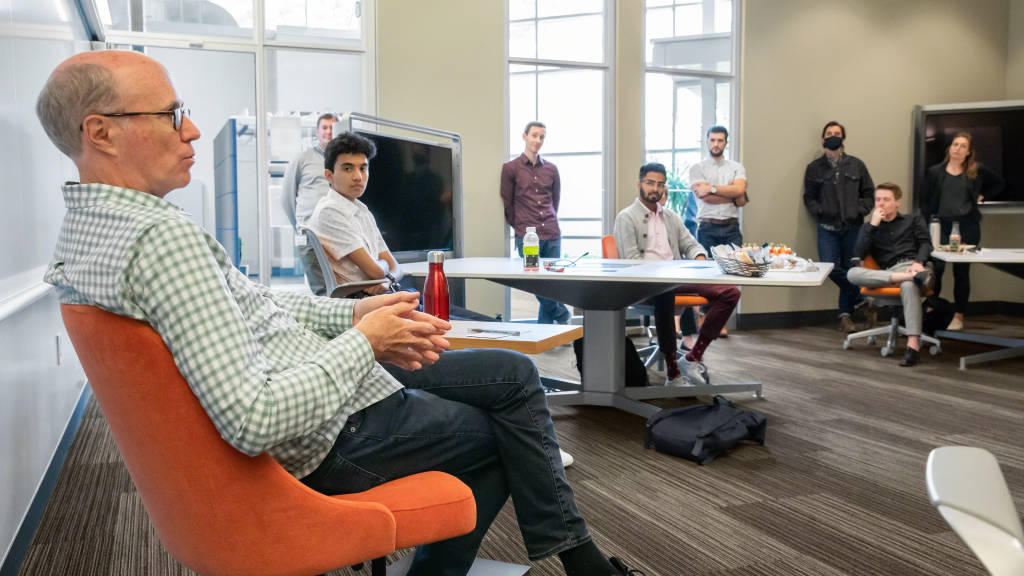
One of our biggest learnings has been around clarity of communication — helping people understand what to expect before they come back, what’s offered on campus, what campus looks like, health and safety requirements, and our expectations around hybrid work. Our new normal of hybrid work means people have lots of flexibility. Employees have choice and control over where they want to work based on what they need to do. But we do ask that the office is your primary workplace in any given week.
KP: We are all learning about hybrid work at the same time. What do you know and not know about hybrid work?
JH: We’ve always been a pretty remote-work company and culture in the Netherlands. But we had our practice run for COVID-19 when we closed our office for four months to remodel and focus on a new world of teamwork. We settled on six rituals; we team up, are open to everyone, always make conscious choices, contribute in engagements with others, respect focus time, and allow ourselves time to refresh. These rituals are seen in our technology (availability or do not disturb), our spaces (stimulating for collaboration or allowing people to recharge) and the design of our building.
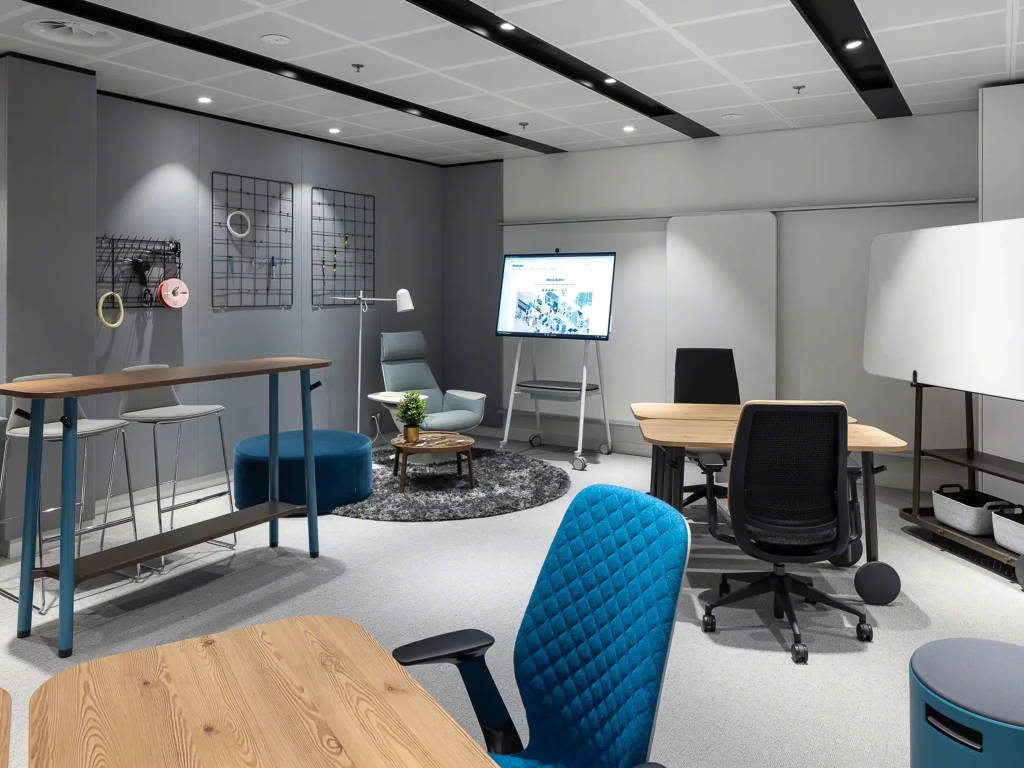
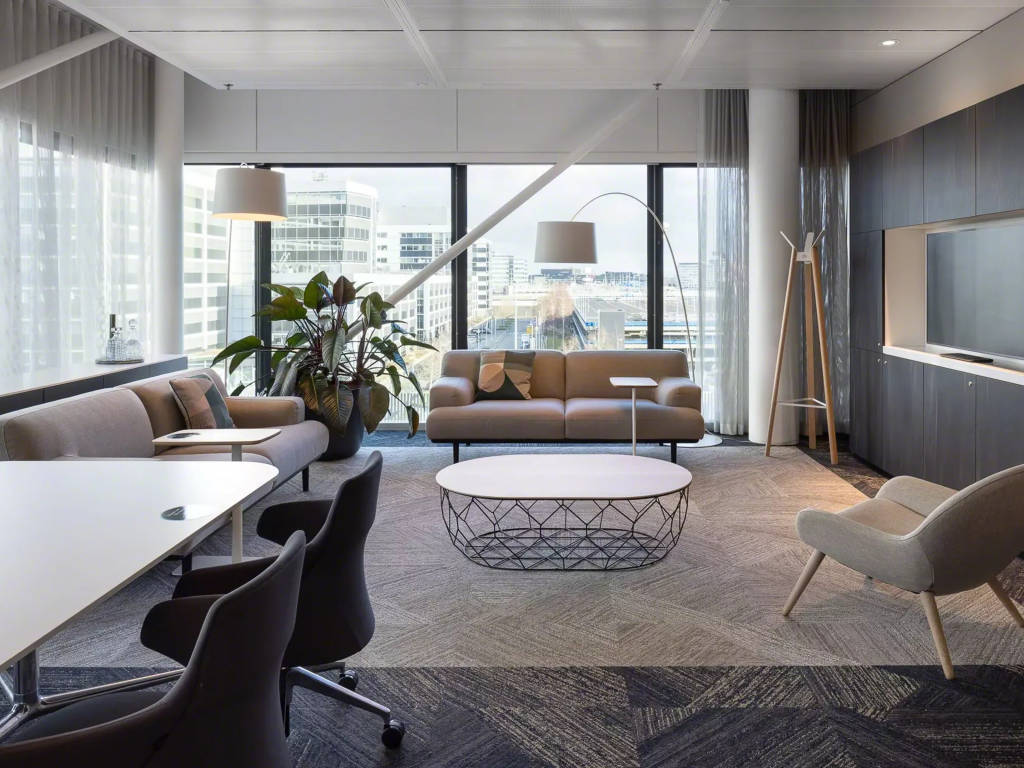
KP: What are organizations struggling with the most when it comes to hybrid work?
TB: We need to figure out this dynamic tension between individual, team and business needs. People might want to stay in their fuzzy slippers with their pets nearby, but that might not be what’s best in terms of energy, innovation and the opportunity to serve customers more directly. Another thing we’re navigating is short-term and long-term. We might assume that when we come back the office experience is “the answer,” but in reality we will need to learn and improve over time. We will need to set the expectation that we’re learning and that we’ll be making ongoing adjustments based on that learning.
DF: To build on what Tracy said, there’s definitely changing employee behaviors and needs for flexibility. But we also know some roles and teams need to be together physically more than others. And some things happen better when we’re physically together — connecting, building trust, expanding our networks.
For the last year, we’ve been stuck in the echo chamber of our schedule, only connecting with people on our calendars. But there’s so many more people we can learn from when we are in the office.
Donna FlynnSteelcase Vice President Global Talent
KP: What have you learned over the past year about how the workplace needs to change?
DF: We’re seeing a couple of big changes — an increase in the office as a center for connecting, rebuilding relationships, engaging in collective creativity and collaborating in a more flexible way. We’re piloting social hubs in our Grand Rapids location to create new types of group collaboration spaces near our WorkCafe that combine food and furniture.
We’re also thinking about how to create privacy in the open plan. A lot of people have discovered the power of privacy during the pandemic after some offices swung the pendulum too far on open spaces. We’re working on ways to create more owned or shared private spaces without requiring an investment in architectural changes.
JH: We think there are four critical things to working in a hybrid fashion. One: The office will always be a place to work. Some people have hardship — an employee had to make a shelf in her bathroom. She’s not going to be able to work often from home. The second: The office will become a more important social meeting place. Third: The office should facilitate collaboration and co-creation by providing an experience that’s as good for people online as it is for those offline. And lastly: There are certain experiences, such as prototyping and working with physical artifacts, that are important to support in an office.
TB: People have reported such high levels of social isolation, so spaces that deliver a feeling of community and pay attention to the opportunity to connect, and create a sense of belonging are at the top of the list. We’re also hearing a big focus on performance. It’s a myth people are going to come into the office to collaborate and then go home to focus. Many customers are saying they plan to change the proportion of the space — with greater focus on collaboration while maintaining space for focused work. We’re also hearing a lot of customers doubling down on spaces for learning and focusing on spaces which provide for wellbeing where people can rejuvenate.
KP: If our audience took one thing away from what you’ve learned, what would it be?
JH: If you want to do remote work well, it starts with trust and isn’t driven by a 9-5 clock. It’s a big culture change and a very different way of managing people. Creating a set of rituals with your team can help.
TB: We are in the midst of nothing less than a talent revolution and the work experience is a critical part of the employee value equation — but we must consider it holistically. We had a customer that uses agile processes and they saw an increase in velocity when people started working from home, but they saw a significant jump in their turnover rate because people weren’t engaged. So we need to look at this holistically and think about the employee value equation in attracting, retaining, engaging and developing people.
DF: This is a rare moment in history to make intentional change for your company, your organization, and your people. Think about what are the shifts you want to make and use this as an opportunity to start making those changes through new policies, principles, behaviors and spaces. Take the time to be intentional and chart a course for culture change.
POLL RESULTS
Our webinar audience answered poll questions throughout the live event. Here’s what they said:
When do you expect to welcome people back to the office?
37% Already have
16% Summer
33% Fall
2% Winter
5% 2022
8% Don’t know
What’s the state of your organization’s return to office planning?
1% Haven’t started thinking about it
28% Some ideas discussed, but no agreed on plan
17% Vision agreed on, but not communicated
9% Detailed plan ready, but not communicated
45% Detailed plan in place. Communication and pilots started.
If you’re planning on hybrid work, how is your organization planning to decide who comes into the office?
25% Employees decide daily
25% Employees choose consistent days
17% Company assigns days
32% Not sure yet
What types of spaces do you expect to need more of in the office?
13% Tech upgrades for enclaves
11% New stand-alone enclosed enclaves
3% High-performance ancillary
18% Collaboration spaces (in general)
49% Hybrid collaboration spaces
6% No changes anticipated
 Joris Haverkort, Microsoft Netherlands Experience Center Director
Joris Haverkort, Microsoft Netherlands Experience Center Director
 Donna Flynn is Steelcase vice president, Global Talent, leading efforts to attract, retain, develop and inspire Steelcase employees around the world. Prior to this work, she served as vice president, Workspace Futures, where her team of researchers studied the future of work, workers and the workplace.
Donna Flynn is Steelcase vice president, Global Talent, leading efforts to attract, retain, develop and inspire Steelcase employees around the world. Prior to this work, she served as vice president, Workspace Futures, where her team of researchers studied the future of work, workers and the workplace.
 Dr. Tracy Brower, PhD, MM, MCRw is a sociologist and the author of two books. The Secrets to Happiness at Work and Bring Work to Life by Bringing Life to Work. Tracy is also a contributor for Forbes.com and Fast Company, and a Principal with the Applied Research + Consulting group at Steelcase.
Dr. Tracy Brower, PhD, MM, MCRw is a sociologist and the author of two books. The Secrets to Happiness at Work and Bring Work to Life by Bringing Life to Work. Tracy is also a contributor for Forbes.com and Fast Company, and a Principal with the Applied Research + Consulting group at Steelcase.



